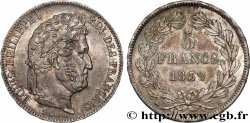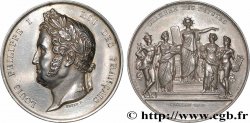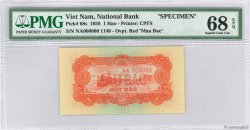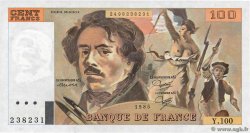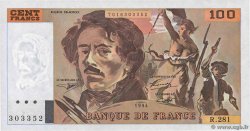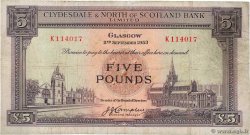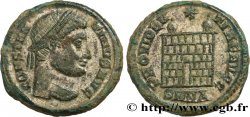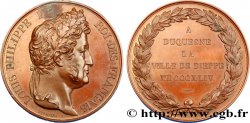E-auction 424-336375 - fme_412108 - LOUIS-PHILIPPE I Médaille, Hommage à Abraham Duquesne
You must signin and be an approved bidder to bid, LOGIN TO BID. Accounts are subject to approval and the approval process takes place within 48 hours. Do not wait until the day a sale closes to register. Clicking on « bid » constitutes acceptance of the terms of use of cgb.fr private e-auctions.
Bids must be placed in whole Euro amounts only. The sale will start closing at the time stated on the item description; any bids received at the site after the closing time will not be executed. Transmission times may vary and bids could be rejected if you wait until the last second. For further information ckeck the E-auctions F.A.Q.
NO BUYER'S FEE.
NO BUYER'S FEE.
| Estimate : | 150 € |
| Price : | 55 € |
| Maximum bid : | 55 € |
| End of the sale : | 31 May 2021 18:39:30 |
| bidders : | 6 bidders |
Type : Médaille, Hommage à Abraham Duquesne
Date: 1844
Mint name / Town : 76 - Dieppe
Metal : bronze
Diameter : 56 mm
Orientation dies : 12 h.
Engraver DEPAULIS Alexis-Joseph (1790-1867)
Weight : 92 g.
Edge : lisse + proue BRONZE
Coments on the condition:
Superbe médaille avec malheureusement une oxydation frottée au-dessus de la tête au droit
Obverse
Obverse legend : LOUIS PHILIPPE I - ROI DES FRANÇAIS.
Obverse description : Tête laurée de Louis Philippe à droite.
Reverse
Reverse legend : A / DUQUESNE / LA / VILLE DE DIEPPE / MDCCCXLIV.
Reverse description : Légende horizontale en 5 lignes.
Commentary
Médaille avec un assez rare poinçon Proue (utilisé entre 1842 et 1945), signée DEPAULIS F.
Abraham Duquesne naît en 1610 à Dieppe (Seine-Maritime) dans une famille huguenote d’armateurs, de corsaires et de marchands. Il est le fils d'Abraham Duquesne (v. 1570-1635), capitaine de vaisseau, calviniste et de son épouse, Marthe de Caux, tous deux originaires de Normandie. Né Roturier, il fut anobli par les titres de baron d'Indret en 1650 et marquis du Quesne en 1682.
Dès son plus jeune âge il suit les pas de son père. Il passe son enfance à Dieppe, qui possède alors la plus grande école d'hydrographie française.
En 1627, à l'âge de dix-sept ans, il entre dans la marine royale et sert à bord du Petit Saint-André, comme lieutenant de son père. Son père tombé malade, il le remplace et capture un navire marchand hollandais, le Berger, qu'il ramène à Dieppe et qui lui est adjugé par le Parlement de la ville. L'année suivante, il commande un vaisseau lors du siège de La Rochelle contre les armées réformées commandées par Jean Guiton, qui deviendra par la suite son beau-frère. S'il se bat dans le camp des armées royales, Duquesne reste cependant très attaché à sa religion.
Il sert sous Louis XIII pendant la guerre de Trente Ans et se distingue en plusieurs occasions, notamment aux combats de Tarragone et du cap de Gata, mais doit quitter la marine en 1644 après avoir perdu un navire.
Pendant les troubles de la minorité de Louis XIV, il obtient de Mazarin l'autorisation de servir dans la marine royale suédoise, en compagnie de son frère. Il prend part à la guerre de Torstenson qui oppose le royaume de Suède au Danemark et se distingue au combat de Fehmarn en prenant le navire amiral du commandant de la flotte danois Pros Mund. Rentré en France, il réintègre la Marine royale et est envoyé en 1669 au secours de Candie, assiégée par les Turcs. Il prend part à la guerre de Hollande (1672-1678) et combat à la bataille de Solebay (1672) et à Alicudi (janvier 1676), mais c'est à la bataille d'Agosta (avril 1676) et à celle de Palerme qu'il se distingue tout particulièrement. Il termine sa carrière avec le grade de lieutenant général des armées navales, freiné dans son avancement par sa religion qu'il refusera d'abjurer malgré l'insistance de Louis XIV et de ses conseillers (Colbert et Bossuet)..
Abraham Duquesne naît en 1610 à Dieppe (Seine-Maritime) dans une famille huguenote d’armateurs, de corsaires et de marchands. Il est le fils d'Abraham Duquesne (v. 1570-1635), capitaine de vaisseau, calviniste et de son épouse, Marthe de Caux, tous deux originaires de Normandie. Né Roturier, il fut anobli par les titres de baron d'Indret en 1650 et marquis du Quesne en 1682.
Dès son plus jeune âge il suit les pas de son père. Il passe son enfance à Dieppe, qui possède alors la plus grande école d'hydrographie française.
En 1627, à l'âge de dix-sept ans, il entre dans la marine royale et sert à bord du Petit Saint-André, comme lieutenant de son père. Son père tombé malade, il le remplace et capture un navire marchand hollandais, le Berger, qu'il ramène à Dieppe et qui lui est adjugé par le Parlement de la ville. L'année suivante, il commande un vaisseau lors du siège de La Rochelle contre les armées réformées commandées par Jean Guiton, qui deviendra par la suite son beau-frère. S'il se bat dans le camp des armées royales, Duquesne reste cependant très attaché à sa religion.
Il sert sous Louis XIII pendant la guerre de Trente Ans et se distingue en plusieurs occasions, notamment aux combats de Tarragone et du cap de Gata, mais doit quitter la marine en 1644 après avoir perdu un navire.
Pendant les troubles de la minorité de Louis XIV, il obtient de Mazarin l'autorisation de servir dans la marine royale suédoise, en compagnie de son frère. Il prend part à la guerre de Torstenson qui oppose le royaume de Suède au Danemark et se distingue au combat de Fehmarn en prenant le navire amiral du commandant de la flotte danois Pros Mund. Rentré en France, il réintègre la Marine royale et est envoyé en 1669 au secours de Candie, assiégée par les Turcs. Il prend part à la guerre de Hollande (1672-1678) et combat à la bataille de Solebay (1672) et à Alicudi (janvier 1676), mais c'est à la bataille d'Agosta (avril 1676) et à celle de Palerme qu'il se distingue tout particulièrement. Il termine sa carrière avec le grade de lieutenant général des armées navales, freiné dans son avancement par sa religion qu'il refusera d'abjurer malgré l'insistance de Louis XIV et de ses conseillers (Colbert et Bossuet)..








 Report a mistake
Report a mistake Print the page
Print the page Share my selection
Share my selection Ask a question
Ask a question Consign / sell
Consign / sell
 Full data
Full data